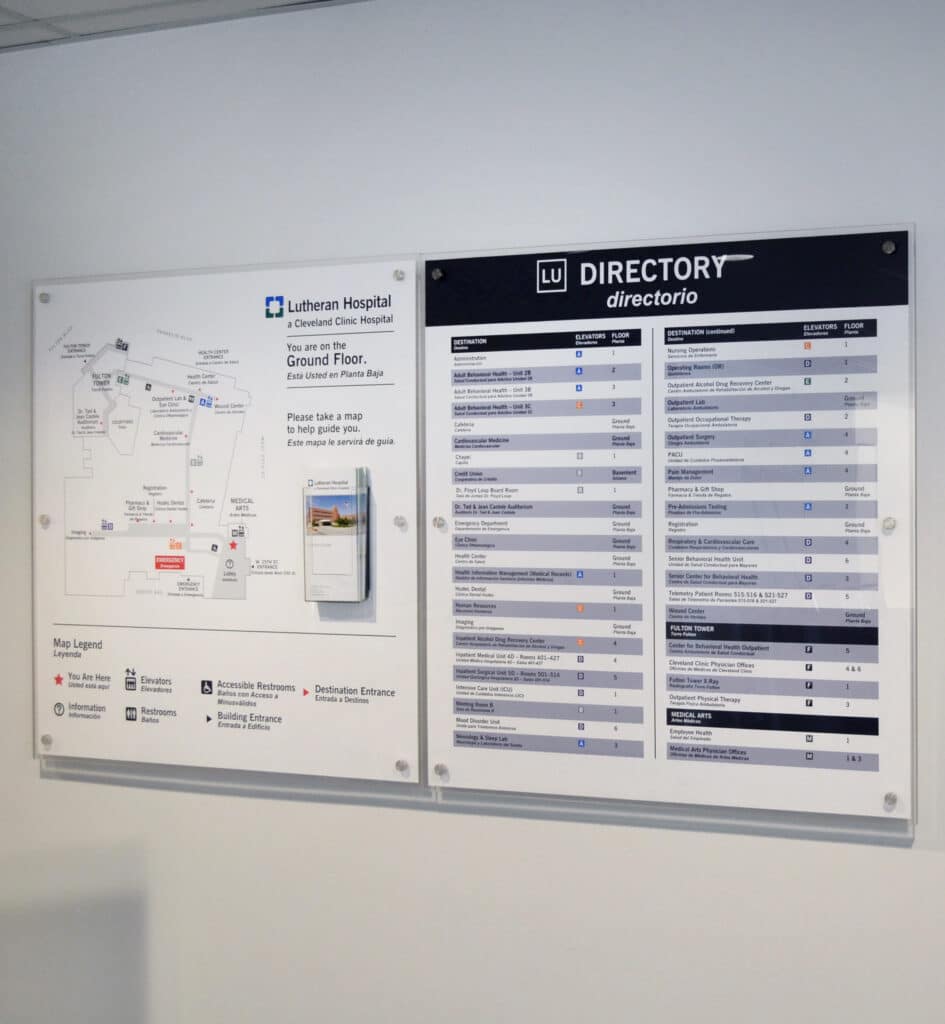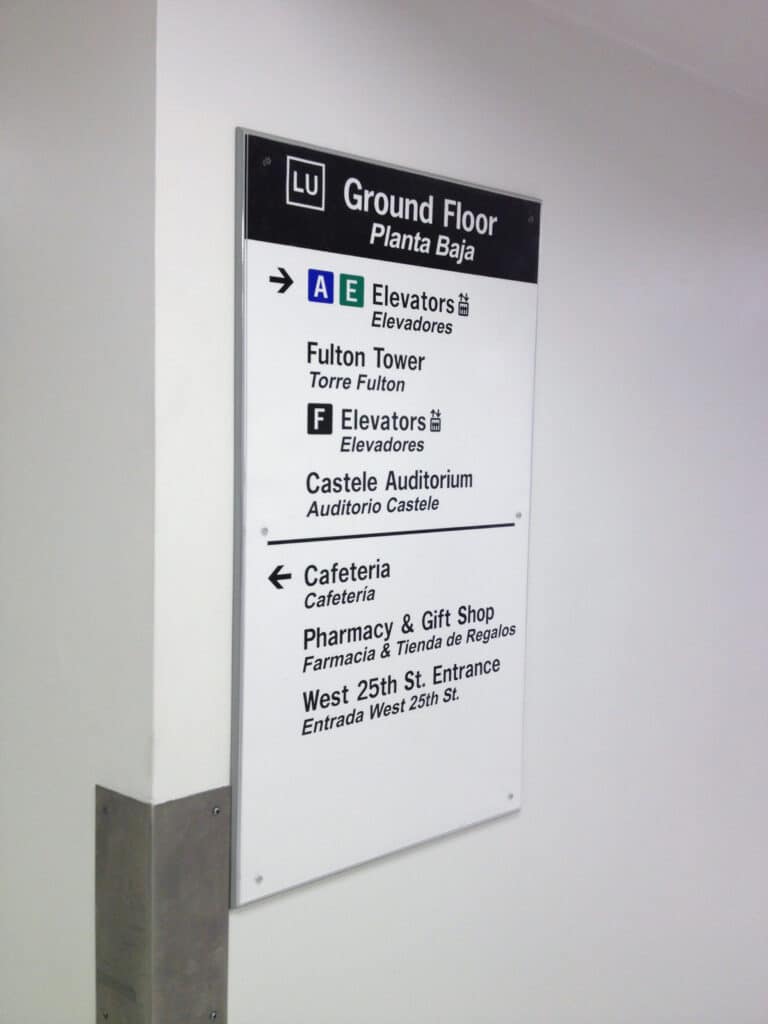
A positive patient experience in healthcare builds trust in providers and allows individuals to become more engaged in their own care. Wayfinding is key to this work, as a well-executed program can improve operational efficiency, reinforce hospital branding, and reduce patient and visitor stress.
Guide Studio understands that a strong wayfinding system built around intuitive pathways, well-placed, clear signage, and easy-to-follow naming conventions are all vital to an effective wayfinding system. As healthcare settings are often large, complex environments, an inconsistent signage program can result in negative outcomes for patients and staff members alike.
“People want to feel comfortable and confident when they’re coming to these facilities because going to the hospital is already a stressful situation,” says Senior Design Consultant Kevin Fromet. Any wayfinding strategy is driven by getting people around a facility efficiently. Considering healthcare systems are often under renovation or expansion, it’s important to constantly re-evaluate signage efficiency as well as your overall wayfinding strategy.

For example, when Cleveland Clinic tasked Guide with improving the navigability of its Lutheran Hospital acute care facility, the immediate goal was to develop brand consistency through signage and general area layout.
Although the Clinic had an existing sign program – including a font and layout standard created in-house – Lutheran’s wayfinding and signage did not align with that of other Clinic facilities. Excessive signage complicated wayfinding for visitors, particularly as Spanish-language signs meant to serve the local population had no real standards in place.
“Too many signs can be overwhelming for people,” says Kevin. “Hospitals think they’re solving the problem by putting up more signs without looking holistically at their purpose, placement and layout.”
To ensure patients could find their way through the Lutheran facility, Guide developed a comprehensive wayfinding program that included creating a standard for nomenclature (terminology) that would be consistent throughout the facility. “Consistency in nomenclature can’t just be on signage,” Kevin says. “You can’t use Radiology Department on a map and call it Imaging on the door sign. Any kind of nomenclature should match the signage because you’re providing people with an expectation when they visit the department. The correct terminology should not just be a consideration for signage. Nomenclature throughout the health system including on the website, referral forms, appointment cards, etc. should be consistent with what they see in the facility.”
A single-lettered/color-coded elevator system and heads-up maps at key decision points further simplified the visitor navigation process by getting you to the correct elevator first, then up to your department destination. Not only are hospital staff now utilizing appropriate names when directing people, but the larger wayfinding strategy in place is also helping improve overall hospital efficiency.

The Clinic project served as a blueprint for how Guide developed wayfinding standards and practices for other healthcare projects. Successful systems are multidimensional and address all aspects of the user journey while promoting a “less is more” approach that facilitates accessibility and eliminates visual clutter.
Guide has continued to develop human-centered wayfinding strategies for its healthcare clients, empowering users of all backgrounds to find a little peace amid a naturally stressful atmosphere.
“These programs are a good practice in simplicity,” says Kevin. “You can be creative in your design, but the wayfinding has to be as straightforward and efficient as possible. It’s about quick comprehension in getting people around a facility.”
Guide has helped improve wayfinding for several Cleveland Clinic facilities, including their Weston, Florida campus; University Hospitals, and is currently completing work on MetroHealth’s new main campus.
Sign Up Fore More Insights
Get the newest information right in your inbox via our monthly newsletter, designed to inspire and inform community visionaries, public space advocates, and facility planners.